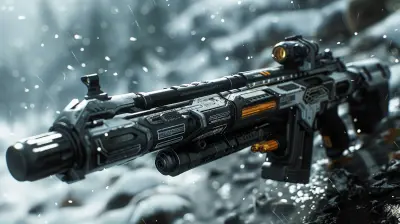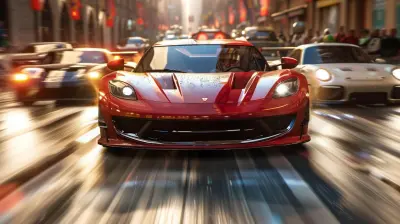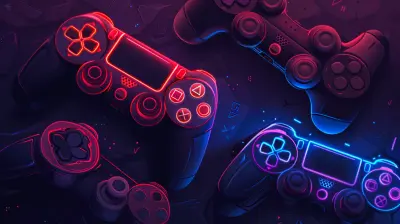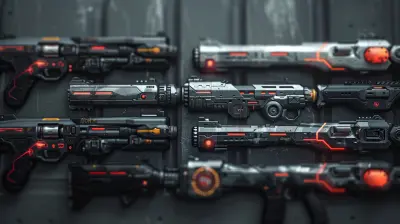Nostalgia or Innovation? What Modern Platformers Get Right
12 June 2025
Let’s take a little trip down memory lane, shall we?
Think about the platformers you grew up with—bright colors, catchy tunes, pixelated perfection, and that rush of adrenaline every time you missed a jump by just a pixel. Now, fast-forward to today. Platformers have evolved, big time. But here's the million-dollar question: Are they riding on nostalgia, or are they pushing the genre into totally new territory?
Honestly? It’s a bit of both—and that’s exactly why modern platformers are thriving more than ever.
Let’s break down what modern platformers are getting right, from tickling our nostalgic nerves to surprising us with outside-the-box creativity.
Why We Fell In Love With Platformers in the First Place
Before we jump into what's new, let’s talk about why platformers became iconic gaming staples in the first place.You had games like Super Mario Bros., Sonic the Hedgehog, and Mega Man setting the stage. Tight controls, simple objectives—jump, run, survive—and a real sense of reward every time you cleared a stage.
There’s something undeniably satisfying about mastering a level through sheer skill and muscle memory. No over-the-top mechanics. Just you, the controller, and the challenge.
It was pure. Simple. Fun.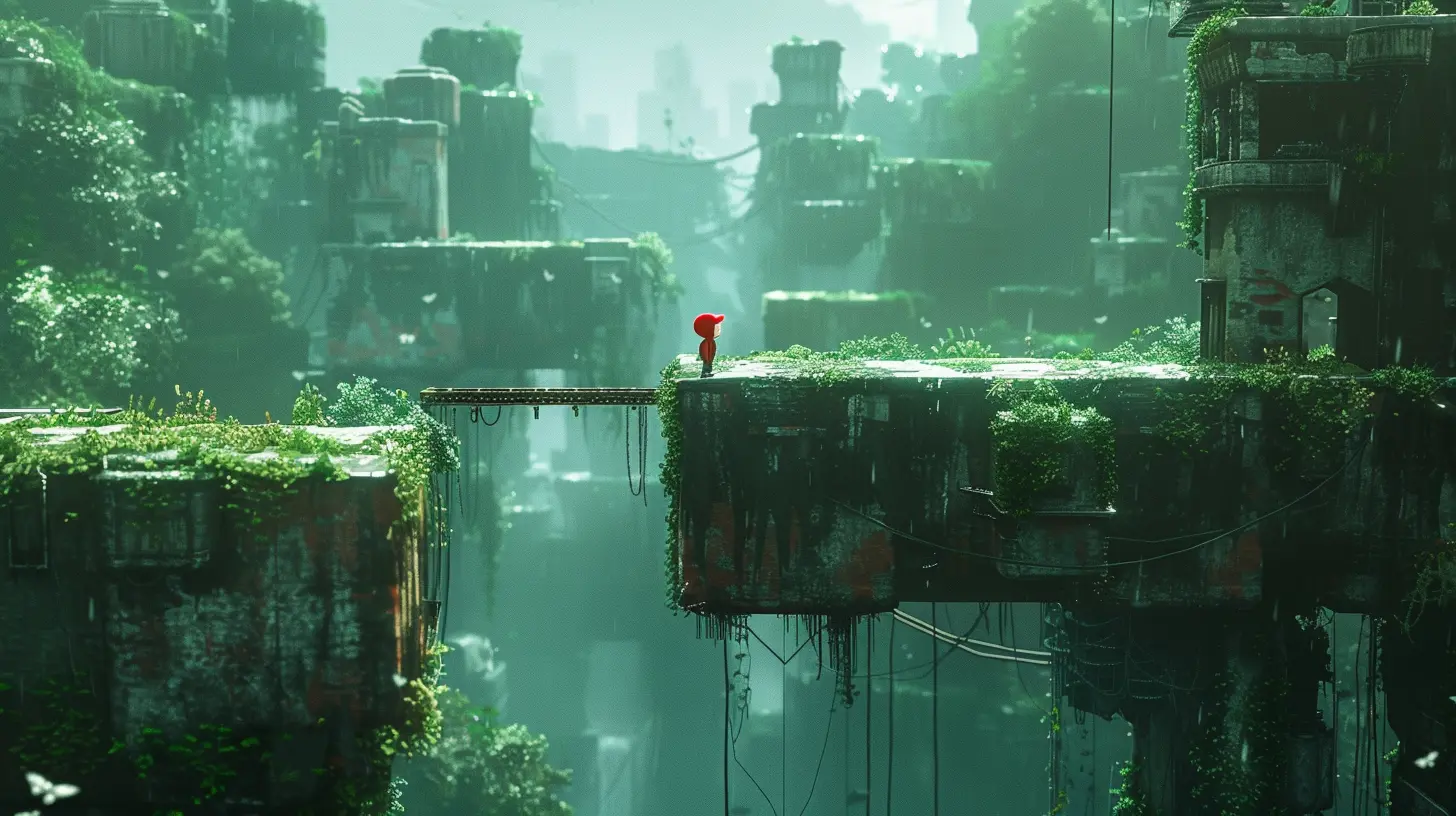
Nostalgia: A Powerful Player Two
Let’s face it—we’re suckers for nostalgia. Game devs know this, and they’re not shy about leaning into it.Pixel Art is Back (And It’s Gorgeous)
Have you noticed how many modern indie platformers use pixel art? It’s not just a stylistic choice; it’s emotional shorthand. One look at a game like Celeste or Shovel Knight, and you're instantly teleported back to your childhood sitting cross-legged in front of a CRT screen.But the difference? These new titles use modern tech to polish the visuals and smooth out gameplay. It’s like getting your favorite childhood snack, but now it’s organic and gluten-free—same great taste, way cleaner execution.
Retro Sounds, Modern Mix
Chiptunes are back too, baby! Though now they come blended with orchestral swells and ambient touches. It’s the best of both worlds. A Hat in Time nails this, mixing whimsical tunes with subtle emotional cues, making the world feel both nostalgic and fresh.
Innovation: The Secret Sauce That Keeps It Fresh
Here’s where things get interesting.Modern platformers don’t just copy the past—they build on it. The smartest devs know that while nostalgia is a great hook, innovation is what keeps players coming back.
Mechanics That Break the Mold
Platformers used to be all about jumping and maybe shooting. Now? We’ve got dimensional shifts, time manipulation, gravity-bending, and even musical integration.Take Celeste, for example. It introduced dash mechanics that feel simple but add deep complexity when mastering movement. Or Ori and the Blind Forest, which combines Metroidvania exploration with silky smooth platforming, wrapped in emotional storytelling.
Innovation isn’t just throwing in fancy features—it’s about using those features to enrich the gameplay.
Story-Driven Platformers? Yes, Please.
Back in the day, you saved a princess or defeated a villain. That was about it. Now, platformers aren’t afraid to get a little emotional.Celeste tackled mental health. Hollow Knight immersed players in a haunting, mysterious world full of lore. Even lighter games like Fez leave players thinking, decoding cryptic clues and theories days after the credits roll.
This evolution doesn't just elevate the genre—it redefines it.
Controls: Tighter Than Ever
If there’s one thing modern platformers have almost universally nailed, it’s control feel.You know that moment when a game's controls click and suddenly you’re wall-jumping through hazards like a parkour ninja? That’s no accident. Developers today obsess over “game feel” more than ever.
And let’s appreciate that. No one wants floaty jumps or cheap deaths anymore. We want to blame ourselves, not the game, when we fail. Good control is the foundation of any great platformer, and today’s titles know that better than most.
Level Design: More Than Just Left To Right
Gone are the days of just running from left to right. Now, level design means puzzles, hidden paths, alternate endings, and environmental storytelling.Have you played Rayman Legends? Each level feels like a musical performance. One stage has you bouncing perfectly in sync to a rock cover of “Black Betty”—and it’s magical.
Modern devs mix verticality, puzzle-solving, and exploration in ways that make you rethink what a platformer level can be.
Accessibility: Everyone Can Play
One of the more heartwarming trends in modern platformers? Accessibility.Games like Celeste include Assist Mode, letting players tweak difficulty without compromising the experience. Want invincibility to enjoy the story? Cool. Need slower game speed to help with reflexes? You got it.
Older games were punishing. Today? Players have options. That’s a win for everyone.
Multiplayer Mayhem & Co-Op Chaos
Remember couch co-op? It’s making a comeback.Games like Unravel Two and It Takes Two bring cooperative gameplay into the fold beautifully. It’s not just about platforming anymore—it’s about communicating, collaborating, and laughing at how often you both mess up a puzzle.
Even the Super Mario series embraced multiplayer chaos with Super Mario 3D World, proving that even the most classic franchises can evolve with the times.
Indie Developers: The Unsung Heroes
Let’s give a standing ovation to indie developers, shall we?These studios are out here crafting passion projects that innovate, inspire, and push boundaries. They’re the reason we have masterpieces like Celeste, Hollow Knight, and The Messenger.
Without big publishers breathing down their necks, indie devs are free to experiment and create heartfelt experiences—and honestly, they’re often the ones driving the genre forward.
So...Nostalgia or Innovation?
Let’s circle back to the original question. Are modern platformers just capitalizing on nostalgia—or are they innovating?Honestly? They’re doing both, and that’s what makes them so special.
When you boot up a modern platformer, it’s like hanging out with an old friend who’s grown up, learned a few tricks, and still knows how to have a blast. It’s the comfort of the past, fused with the brilliance of the present.
And that balance? That’s where the magic happens.
Final Thoughts: The Golden Age of Platformers (Again)
We’re officially in a new golden age for platformers. Whether you're chasing childhood memories or craving cutting-edge gameplay, today’s titles have something for everyone.You don’t have to choose between nostalgia and innovation. The best games blend both so well, you won’t even notice where one ends and the other begins.
So grab your controller, pick your favorite indie gem or high-budget sequel, and get ready to jump, dash, and wall-slide back into one of gaming’s most beloved genres.
all images in this post were generated using AI tools
Category:
Platformer GamesAuthor:

Aurora Sharpe
Discussion
rate this article
3 comments
Nixie Stevens
Oh, because who doesn’t love staring at pixelated sprites while pining for simpler times? Let’s just ignore all the shiny new mechanics—nostalgia is clearly the superior platforming strategy!
June 21, 2025 at 3:54 PM

Aurora Sharpe
While nostalgia brings charm and familiarity, innovation is essential for keeping platformers fresh and engaging. Both can coexist to create memorable experiences.
Rachel Lawrence
Modern platformers beautifully blend nostalgia with innovation, proving that classic gameplay can evolve while staying fun.
June 15, 2025 at 5:02 PM

Aurora Sharpe
Absolutely! Modern platformers expertly combine the charm of classic gameplay with fresh ideas, creating an engaging experience that appeals to both new and seasoned players.
Zanya Reynolds
Modern platformers expertly balance nostalgia and innovation, creating fresh experiences that honor classic gameplay while evolving.
June 14, 2025 at 3:13 AM

Aurora Sharpe
Thank you! I completely agree; modern platformers truly excel at blending the charm of classic gameplay with innovative mechanics to create unique and engaging experiences.
